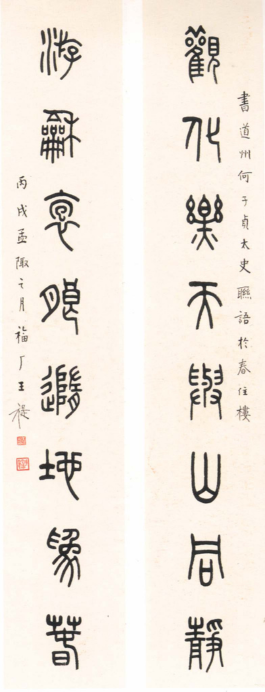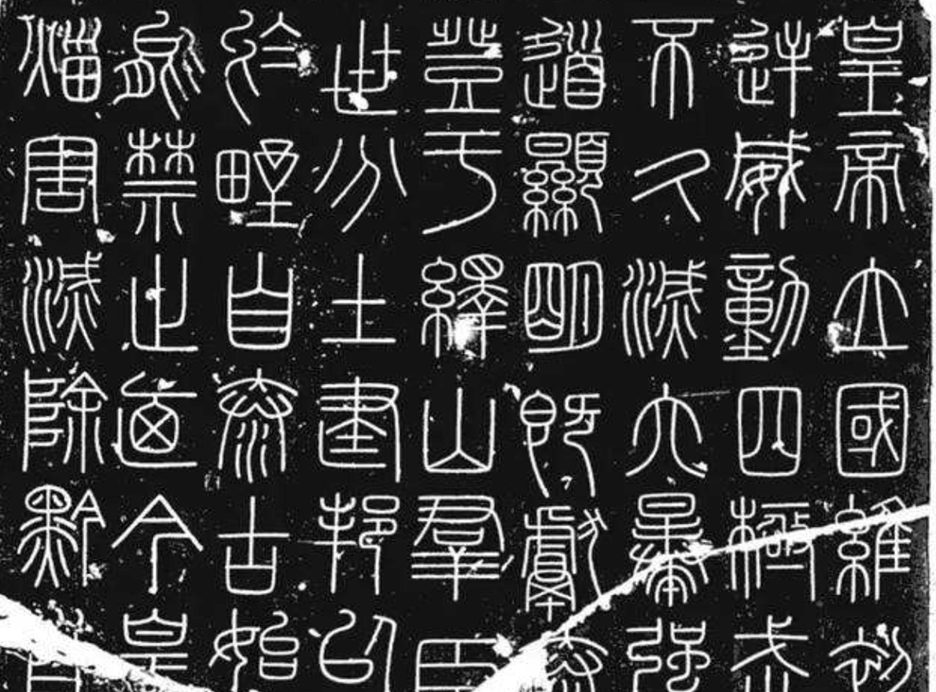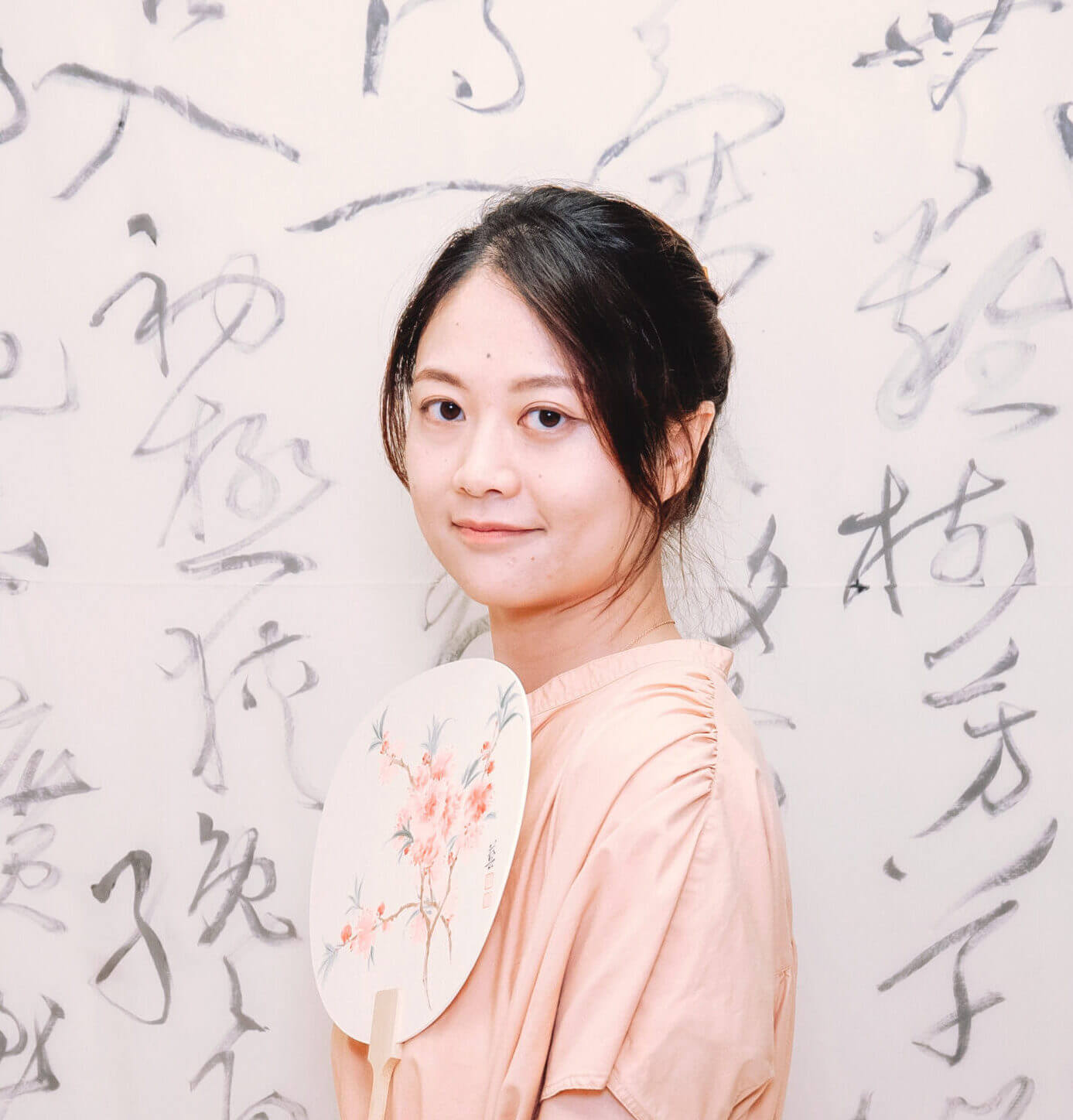New! Chinese Calligraphy: Seal Script II (Zhuanshu 篆书 II) – Writing a Couplet (Virtual)
Summer Semester Starts the Week of July 14, 2025.
Register by June 15 to receive $30 discount off tuition.
As a continuation of your Seal Script journey, this course builds on the foundational techniques and principles introduced in Seal Script I. You will further develop your understanding and create your own artwork, applying what you’ve learned in more advanced and expressive ways.
Seal Script (篆书, Zhuànshū) is one of the earliest forms of Chinese calligraphy, originating during the Zhou Dynasty (1046–256 BCE) and later standardized in the Qin Dynasty (221–206 BCE) under the influence of Li Si (c. 280 BCE – 208 BCE). Known for its elegant curves, rounded and elongated strokes, and symmetrical structure, Seal Script emphasizes balance and harmony. The style continued to flourish into the Qing Dynasty (1644–1912 CE), when many calligraphers contributed their unique interpretations, enriching its beauty and expanding its expressive possibilities.
In this 5-week course, we will continue to explore the techniques of the Seal Script, going beyond the basics to uncover new creative approaches. The course will be centered around a model couplet artwork by Wang Fu’an (see reference below), which will serve as a guide to deepen your practice and understanding of this refined style.
By the end of the course, you will complete and present your own original Chinese calligraphy couplet artwork as in the picture.
Homework submission is required, as it allows the instructor to track your progress and provide personalized feedback in a timely manner.
This course is recommended for students who have prior experience with Seal Script or with other styles of Chinese calligraphy.
Course Outline:
- Week 1: Introduction to Writing, Tools & Materials, Review of Basics in Seal Script, Writing of 化、天、观、乐
- Week 2: Writing of 山、同、与、静
- Week 3: Writing of 游、和、抱、朗
- Week 4: Writing of 随、地、为、春
- Week 5: Final Review and Calligraphic Composition
Tools Needed:
- A calligraphy brush pen (for Seal Script)
- Liquid ink
- Ink dish
- Practice paper
- Felt
**Detailed requirements and a recommended list will be provided. Students can choose to buy tools from Amazon or locally.
Steps to Take the Course:
- Prepare a device with a camera that can run Zoom.
- Have your writing tools readily available.
- Click on the Zoom link you received to join the class.
- Attend the 1.5-hour class session.
- Practice after class and submit your assignments to the shared Facebook album.
References:

观化乐天与山同静,游和抱朗随地为春。
In observing nature’s joy, one shares the mountain’s tranquil grace;
Roaming in harmony, all places bloom with spring’s embrace.Wang Fu’an 王福庵 (1880–1960)
Dynasty: Late Qing Dynasty into the Republic of China period
Calligraphy Style: Specialist in Seal Script and Seal Carving
Also named as Wang Zhi 王禔, Wang Fu’an was a leading figure in the modern revival of Seal Script. He studied classical models and infused them with personal elegance and innovation. His works are highly regarded for their precision, balance, and refinement. He was also active in promoting traditional calligraphy and left behind a strong legacy in Chinese art education.
More artwork: https://www.artnet.com/artists/wang-fuan/

李斯《峄山刻石》
The Yìshān Kèshí (峄山刻石) is one of the most significant stone inscriptions from the Qin dynasty, attributed to Lǐ Sī (李斯), the influential chancellor of Qin Shi Huang (秦始皇). Carved around 219 BCE on Mount Yi (峄山) in present-day Shandong Province, it commemorates Qin Shi Huang’s eastern tour and celebrates his unification of China. The inscription praises his governance, centralization of power, and efforts in standardizing writing, measurements, and administration across the empire. Written in Small Seal Script (小篆, Xiǎo Zhuàn), a script standardized under Lǐ Sī’s influence, the text reflects the Qin dynasty’s emphasis on order and uniformity. This script played a crucial role in unifying Chinese writing, influencing later calligraphic styles. Though the original stone has been lost, its content has been preserved through historical records and rubbings. The Yìshān Kèshí remains an important artifact in Chinese history, representing both political propaganda and artistic achievement. It not only honors Qin Shi Huang’s rule but also showcases Lǐ Sī’s literary and calligraphic expertise, marking a key moment in the evolution of Chinese script and governance.
Fees
5 sessions (7.5 hours)
$170 member / $210 non-member (7.5 hours of virtual class instruction + outside-of-class homework comments)
(plus a $30 non-refundable registration fee)
Maximum Number of Students: 10
Instructor

Yi Su 苏艺
Yi Su 苏艺 is a professional Chinese calligrapher, member of China Calligraphers Association and North America Chinese Calligraphy Association. Practicing calligraphy for over two decades, she began her training in childhood and has earned many awards. Her artworks have been showcased in various exhibitions. After earning a master’s degree in arts administration, she held a solo exhibition at Pace University Gallery in 2015 and founded her art studio “BIMO Theory” in 2020.
Now based in New York, Yi is dedicated to teaching calligraphy and creating her own artwork. She is a descendant of Su Shi 苏轼 (1037-1101), renowned poet, scholar, and calligrapher in Song dynasty. While proficient in multiple calligraphy styles, Yi particularly favors “small standard script” and “large cursive script,” through which she takes most of passion to express her unique artistic vision.
To learn more about Yi Su, please visit her website: https://www.bimotheory.com/
Testimonials
I first learned with 苏 老 师 during China Institute’s Lunch and Learn program. I was so glad when she offered her calligraphy course this fall. She is an excellent teacher, very meticulous and methodical in making calligraphy accessible and enjoyable. What I appreciate most is how her exercises (homework) not only help students understand proper stroke order and “shapes” but also create more confidence in writing altogether. Her calm manner during class also reinforces the meditative quality of calligraphy.